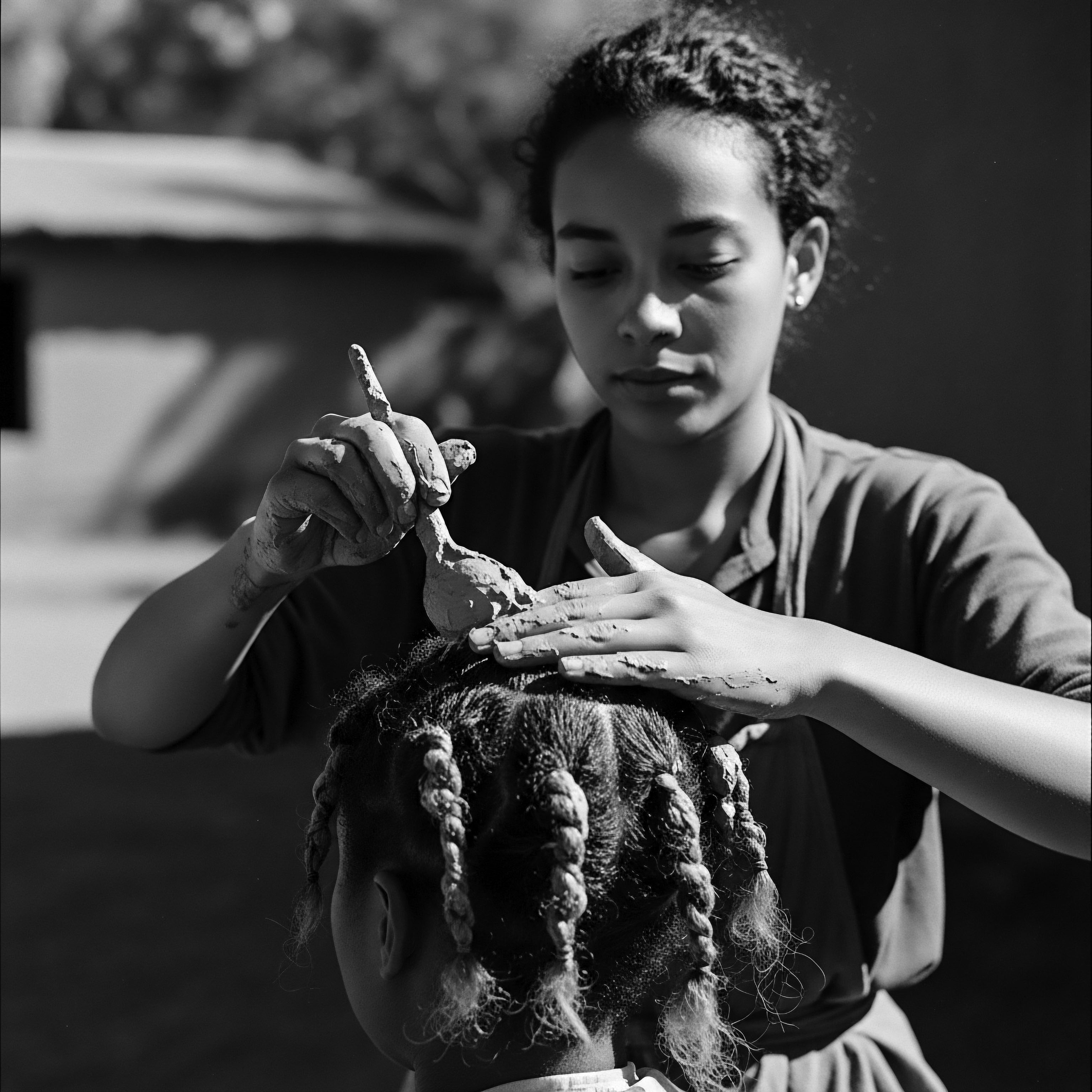
Fundamentals
The very notion of “Hair Stem Cells” might, at first whisper, seem a purely scientific construct, far removed from the ancestral rhythms of hair care. Yet, for Roothea, its meaning is inextricably tied to the enduring legacy of textured hair, a lineage of strength, resilience, and identity. At its most fundamental, a Hair Stem Cell is a specialized cell, a foundational unit nestled within the hair follicle, holding the remarkable capacity to regenerate the hair shaft and contribute to the cyclical nature of hair growth. This biological marvel is the very source of our strands, the wellspring from which new hair emerges, time and again.
Consider it the primordial seed within the earth of our scalp, holding the complete blueprint for each unique coil, curl, or wave. Its explication extends beyond mere cellular mechanics; it speaks to the very continuation of our hair story, generation after generation. These cells, often residing in a niche known as the “bulge” region of the follicle, are quiescent for periods, awaiting the precise biological cues to awaken and initiate a new cycle of growth, replacing shed strands with fresh ones. This inherent regenerative power, this continuous renewal, forms the bedrock of our hair’s existence.
Hair Stem Cells are the foundational architects within each follicle, holding the ancestral memory and regenerative power for every unique strand.
The delineation of Hair Stem Cells, then, is not merely about cellular biology; it is about understanding the profound cyclicality of life itself, mirrored in our tresses. For textured hair, which has historically been subjected to immense scrutiny and systemic pressures, this biological reality takes on added significance. It reminds us that despite external forces, the internal mechanism for growth, for renewal, for the continuation of our hair’s distinct characteristics, remains. The statement of these cells’ function clarifies how hair, even when seemingly lost or damaged, possesses an inherent capacity for return, a testament to its deep-seated vitality.
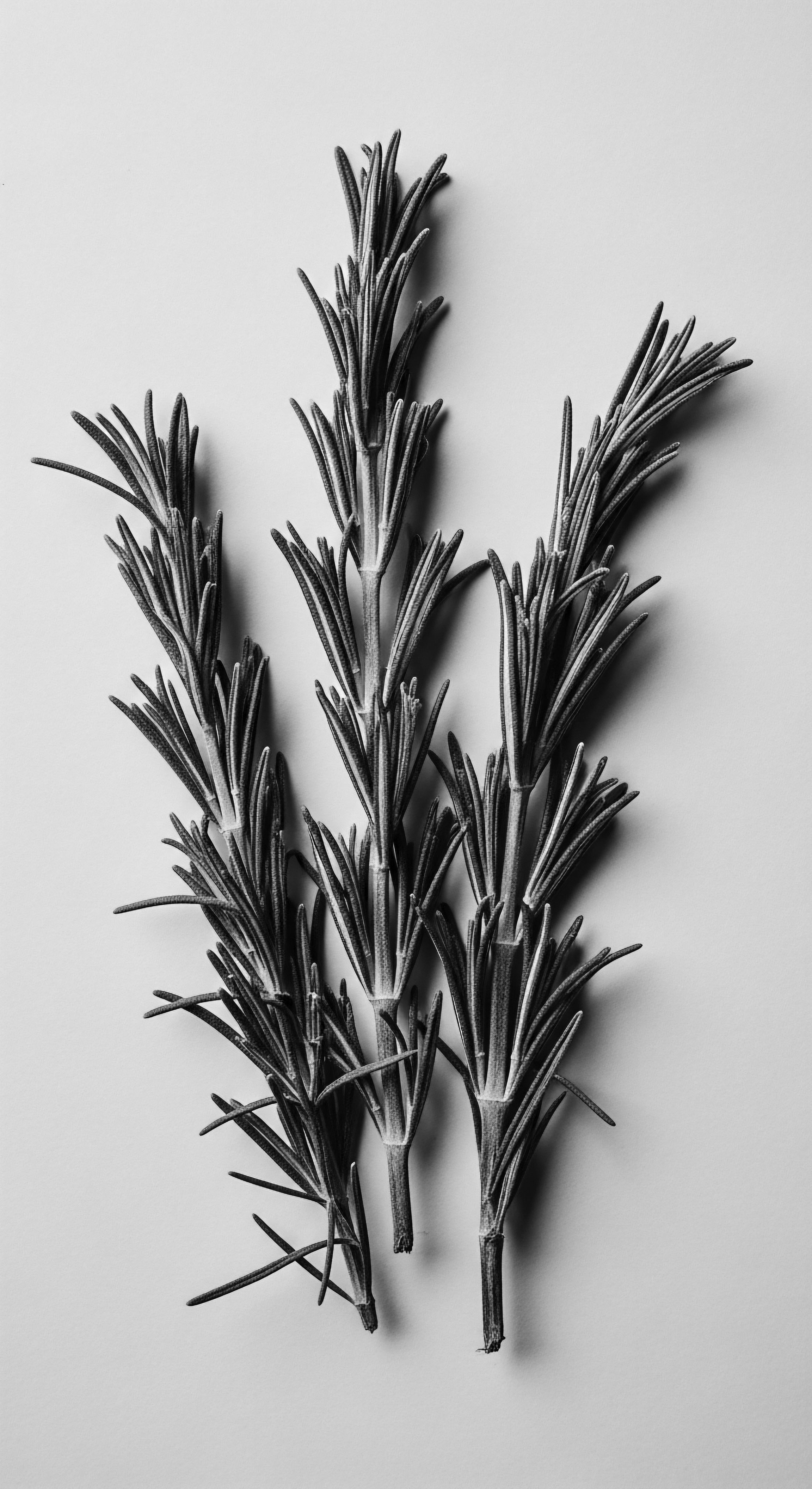
The Root’s Whisper ❉ Basic Biology and Ancestral Echoes
Within the dermal papilla and the outer root sheath of the hair follicle, these extraordinary cells reside. Their designation as “stem cells” highlights their self-renewing ability and their potential to differentiate into various cell types necessary for hair shaft formation. This basic biological understanding, however, gains a deeper sense when viewed through the lens of ancestral practices. Many traditional hair care rituals, long before the advent of microscopes, instinctively nurtured the scalp and hair at its source, recognizing the connection between a healthy scalp and robust hair growth.
- Follicle Niche ❉ The specific microenvironment, often called the bulge, where Hair Stem Cells are maintained in a quiescent state, awaiting signals for activation.
- Regenerative Capacity ❉ The intrinsic ability of these cells to repeatedly produce new hair shafts throughout a person’s lifetime.
- Growth Cycle ❉ The natural progression of hair through anagen (growth), catagen (transition), and telogen (resting) phases, a cycle driven by Hair Stem Cells.
The ancient wisdom of scalp oiling, herbal rinses, and gentle manipulation, practices common across African diasporic communities, can be seen as an intuitive care for this very source. These practices, while not articulated in scientific terms, sought to create a fertile ground, a supportive environment, for the hair to flourish from its elemental beginnings. The cultural significance of such rituals underscores a long-held understanding of hair’s living nature, a recognition that its vitality springs from a deeper place.
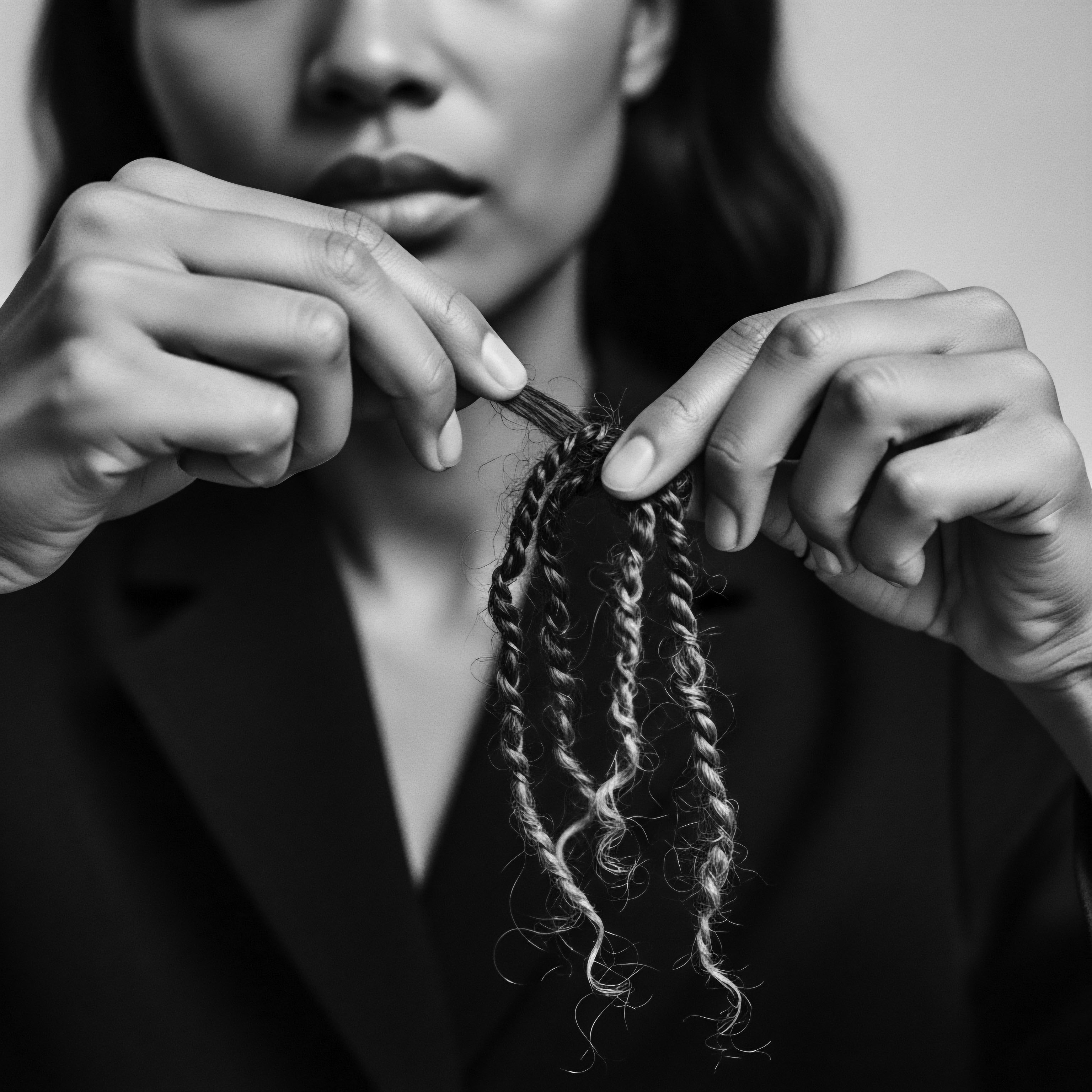
Intermediate
Moving beyond a simple overview, the intermediate meaning of Hair Stem Cells delves into their dynamic role in hair biology and their profound connection to the historical and cultural experiences of textured hair. This exploration involves understanding the intricate signaling pathways that govern their activity, and how these biological processes intersect with the lived realities of hair care, identity, and societal perceptions, particularly within Black and mixed-race communities. The Hair Stem Cells, in this context, are not merely biological entities; they are also symbols of enduring vitality in the face of historical challenges.
The specification of their function involves a complex interplay of growth factors, cytokines, and cellular interactions within the hair follicle. These molecular conversations dictate when a stem cell awakens from its resting state, divides, and differentiates to form the various layers of the hair shaft. This continuous process of shedding and renewal, a fundamental characteristic of human hair, takes on a distinct resonance for those whose hair has been politicized, scrutinized, and often deemed “other.” The Hair Stem Cells stand as a testament to the inherent strength of textured hair, capable of persistent renewal despite external pressures.
The rhythmic dance of Hair Stem Cells within the follicle echoes the enduring spirit of textured hair, a continuous renewal in the face of history’s currents.
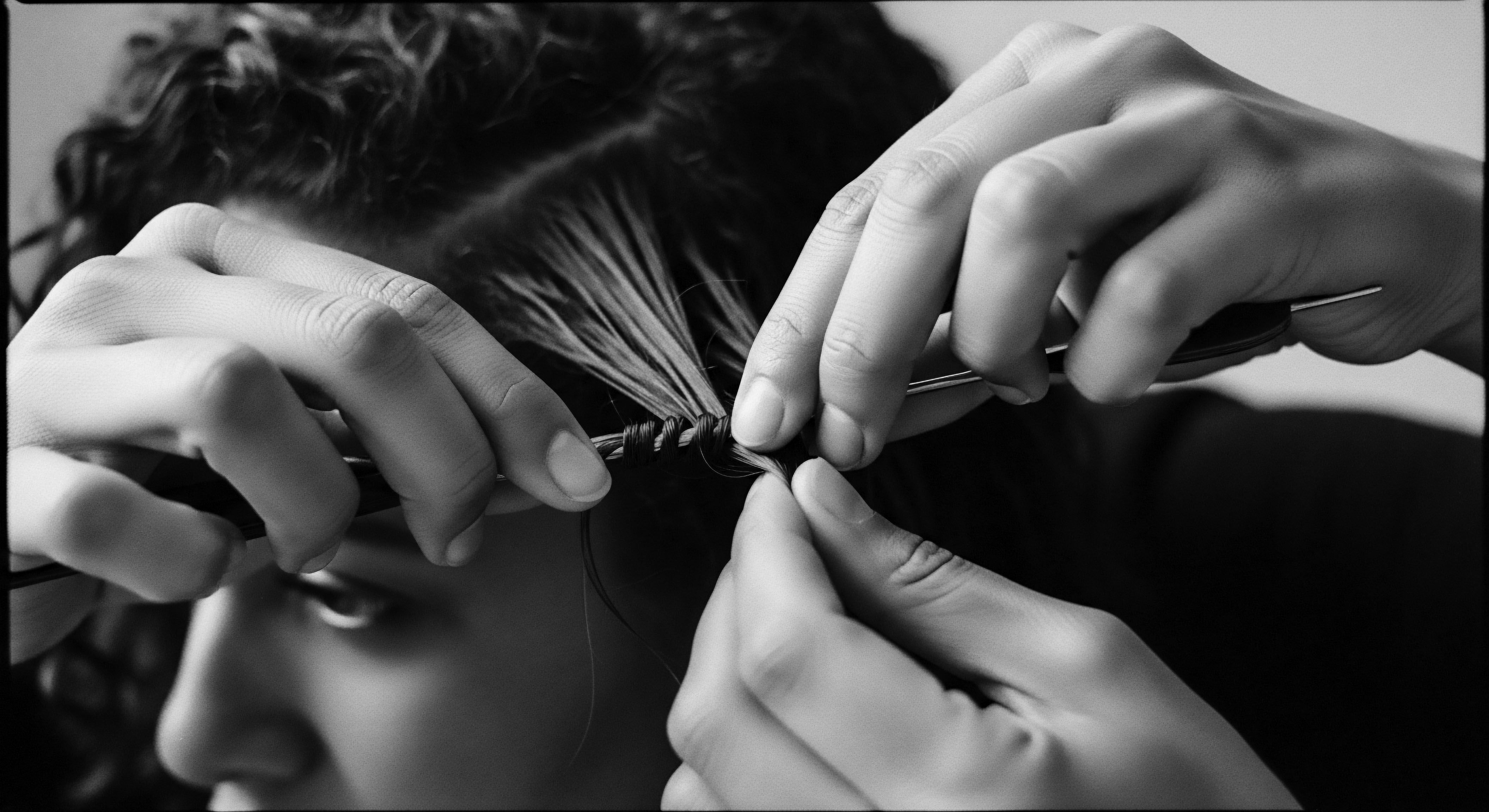
Cycles of Renewal ❉ A Heritage of Persistence
The cyclical nature of hair growth, governed by Hair Stem Cells, finds a compelling parallel in the historical resilience of Black and mixed-race hair traditions. Just as hair sheds and regrows, so too have practices of care and adornment persisted and adapted through generations, often in defiance of dominant beauty standards. The biological blueprint held within these cells for specific curl patterns and textures speaks to an inherited legacy, a genetic memory that connects individuals to their ancestral roots.
For instance, the enduring practice of Hair Oiling and Scalp Massage in various African communities, passed down through oral tradition and lived experience, intuitively supported the follicular environment where Hair Stem Cells reside. These rituals, often performed communally, fostered not only physical hair health but also communal bonding and the transmission of cultural knowledge. Ethnobotanical studies have documented numerous plants used in African hair care, many of which possess properties that could support scalp health and, by extension, the stem cell niche.
For example, in parts of West Africa, certain herbs and plant-based mixtures are traditionally used to promote hair growth and address scalp conditions (Cosmetopoeia of African Plants, 2024). This practice, while ancient, aligns with modern understanding of a healthy scalp environment being conducive to stem cell activity.
| Traditional Practice Scalp Oiling with Plant Extracts |
| Heritage Context Used across African communities for moisture, strength, and scalp health, often with ingredients like shea butter, coconut oil, or indigenous herbs. |
| Modern Scientific Link to Hair Stem Cells Nourishes the scalp environment, reduces inflammation, and improves blood circulation, all of which indirectly support the health and function of the follicular stem cell niche. |
| Traditional Practice Protective Styling (Braids, Twists) |
| Heritage Context Practiced for centuries to manage textured hair, minimize manipulation, and preserve length, serving as cultural markers. |
| Modern Scientific Link to Hair Stem Cells Reduces physical stress on hair follicles, preventing breakage and potential damage to the stem cells and their surrounding structures from excessive pulling or heat. |
| Traditional Practice Herbal Rinses and Washes |
| Heritage Context Utilized for cleansing, conditioning, and treating scalp ailments, often incorporating plants with anti-inflammatory or antimicrobial properties. |
| Modern Scientific Link to Hair Stem Cells Maintains a balanced scalp microbiome, reduces irritation, and provides antioxidants, creating an optimal environment for Hair Stem Cell activity and healthy hair regeneration. |
| Traditional Practice These traditional practices, deeply rooted in heritage, demonstrate an intuitive understanding of hair biology that modern science now elucidates, highlighting the wisdom of ancestral care. |
The very concept of “good hair” versus “bad hair,” a painful dichotomy historically imposed upon Black communities, speaks volumes about the external pressures placed upon natural hair textures. Yet, the Hair Stem Cells operate independently of these judgments, faithfully reproducing the hair’s intended pattern. The understanding of their meaning, therefore, becomes an act of reclamation, affirming the inherent value and beauty of all textured hair, irrespective of imposed standards.
The continuous efforts to straighten or alter natural hair, often through harsh chemical processes like lye-based relaxers, which could cause scalp burns and hair loss, underscore a history where the biological reality of textured hair was often suppressed for social acceptance (Byrd & Tharps, 2001, p. 74),
The Hair Stem Cells, through their consistent function, remind us that the natural state of textured hair is not a deviation, but an original, powerful expression. Their persistent activity, unaffected by the social and political currents that have shaped perceptions of Black hair, underscores the enduring truth of its unique biological design.
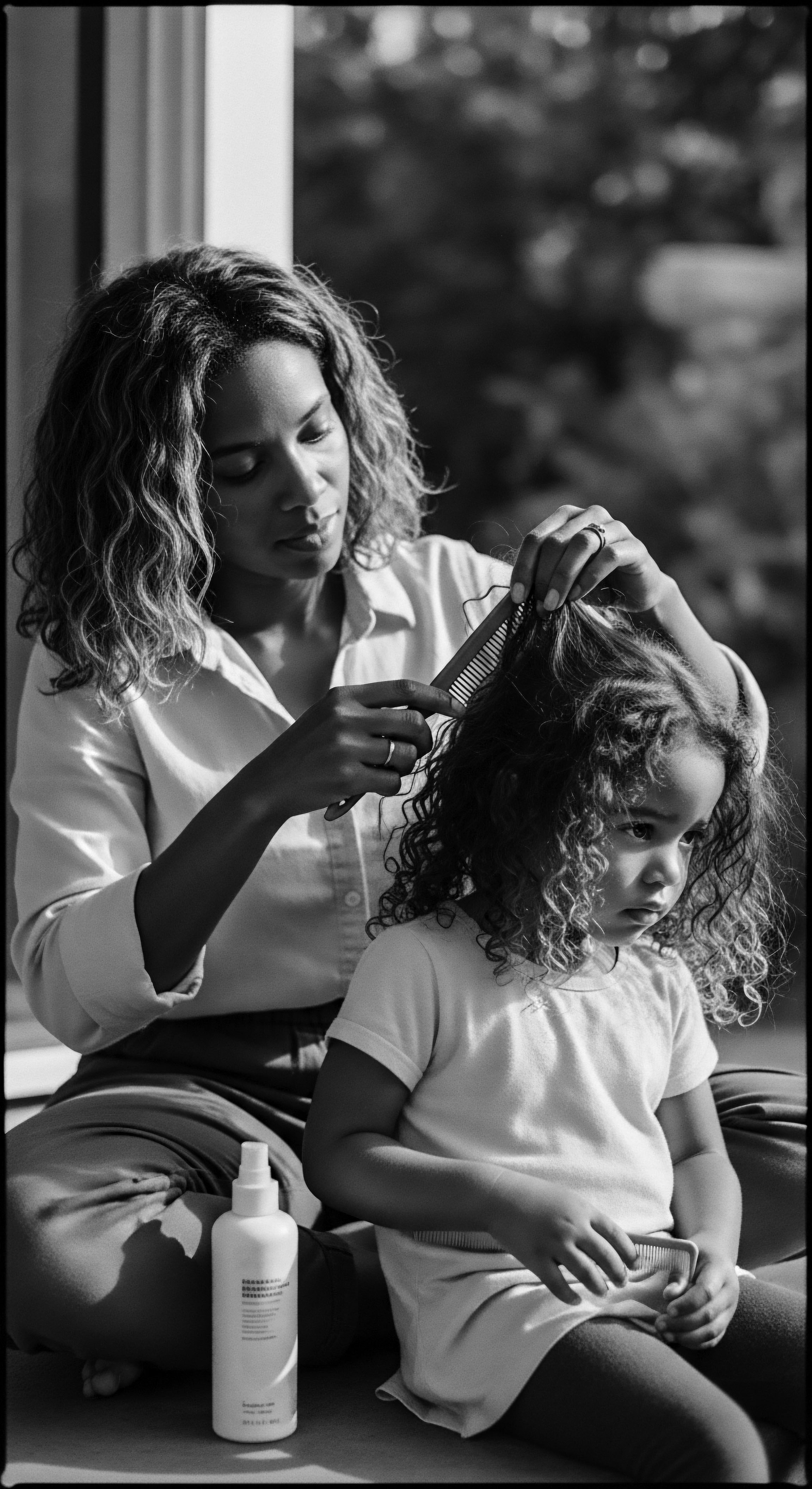
Academic
The academic elucidation of Hair Stem Cells transcends simple biological definitions, positioning them as a complex, self-organizing system whose precise regulatory mechanisms remain a frontier of scientific inquiry. Their meaning, at this level, encompasses not only their cellular identity and regenerative capabilities but also the intricate molecular and cellular cross-talk that orchestrates the hair cycle, along with the profound implications for understanding hair disorders, particularly those disproportionately affecting individuals with textured hair. This deep exploration demands a rigorous examination of their role within the broader context of tissue homeostasis and regeneration, viewed through the distinctive lens of textured hair heritage.
A Hair Stem Cell, within the academic discourse, is defined as a multipotent epithelial stem cell population primarily residing within the Hair Follicle Bulge, characterized by its quiescent state during telogen and its activation and proliferative capacity during anagen. These cells possess the unique capability for self-renewal and the ability to differentiate into various lineages required for the continuous regeneration of the hair shaft and sebaceous gland. The interpretation of their function involves a sophisticated understanding of their interaction with the dermal papilla—a mesenchymal cell population—and the surrounding microenvironment, known as the Stem Cell Niche.
This intricate communication, mediated by an array of signaling molecules such as Wnt, Shh, and Notch pathways, governs the precise timing and patterning of hair growth cycles. The delineation of these pathways is critical for deciphering the mechanisms underlying hair loss conditions and for developing targeted regenerative therapies.
The academic meaning of Hair Stem Cells reveals them as highly regulated biological architects, whose nuanced cellular dialogues underpin the resilience and regenerative promise of all hair, particularly resonant for textured hair.
From an academic perspective, the significance of Hair Stem Cells for textured hair extends into the realm of genetic predispositions and culturally influenced practices that affect hair health. For instance, certain hair loss conditions, such as Central Centrifugal Cicatricial Alopecia (CCCA), are notably prevalent among Black women. CCCA, a progressive form of scarring alopecia, involves chronic inflammation and destruction of hair follicles, ultimately leading to permanent hair loss. While its exact etiology remains under investigation, research suggests a complex interplay of genetic factors, styling practices that exert chronic tension (like tight braids, weaves, and chemical relaxers), and inflammatory responses (Byrd & Tharps, 2001, ).
The long-term consequences of these practices on the hair follicle, particularly on the delicate stem cell niche, represent a critical area of study. The persistent tension from certain styles, while historically rooted in necessity or aesthetic preference, can induce micro-trauma, inflammation, and fibrosis around the follicle, potentially compromising the viability and regenerative capacity of Hair Stem Cells over time. This particular area of study provides a unique, expert-specific insight into the challenges faced by textured hair.

The Unseen Scars ❉ Hair Stem Cells and the Legacy of Styling
The profound impact of hair care practices on the health of the hair follicle, and by extension, its stem cell population, is a subject of ongoing academic scrutiny. The historical trajectory of Black hair in America, as detailed by Byrd and Tharps in Hair Story ❉ Untangling the Roots of Black Hair in America (2001), illustrates a forced departure from ancestral hair practices towards Eurocentric beauty standards. This shift often involved the widespread use of chemical relaxers and high-tension styles, which, while offering temporary conformity, carried significant dermatological consequences,
A study found that Black Consumers Spend Nine Times More on Hair Care Products Compared to Other Ethnic Groups, yet this high expenditure often goes towards products and styles that can be damaging, perpetuating a cycle of harm and repair. This economic and social pressure to alter natural hair texture underscores a deeper societal issue that directly impacts the physical biology of hair. The Hair Stem Cells, resilient as they are, operate within a system that has been historically challenged by external interventions. The constant exposure to harsh chemicals or sustained tension can induce chronic inflammation and structural changes within the follicular unit, potentially leading to premature exhaustion or senescence of these vital stem cells.
- Chemical Trauma ❉ The application of chemical relaxers, historically designed to permanently alter the disulfide bonds in hair, can cause direct damage to the scalp and hair follicle, potentially impacting the Hair Stem Cells.
- Mechanical Stress ❉ Styles such as tight braids, weaves, and extensions, while often serving as protective measures, can exert significant traction on the hair root, leading to a condition known as traction alopecia, which can impair stem cell function.
- Inflammatory Responses ❉ Chronic irritation from certain products or styling methods can trigger inflammatory cascades in the scalp, creating a microenvironment hostile to the delicate balance required for optimal Hair Stem Cell activity.
Understanding the mechanisms by which these historical and cultural practices influence Hair Stem Cell behavior is not merely an academic exercise; it is an act of acknowledging and addressing health disparities. Research into traditional African hair care, which often prioritized scalp health through natural ingredients and gentle methods, offers valuable insights. For instance, the use of natural oils, herbs like Chebe powder, and specific massage techniques, passed down through generations, implicitly supported a healthy follicular environment, These ancestral practices, developed through centuries of lived experience, offer a compelling counter-narrative to the damaging effects of imposed beauty norms, demonstrating an inherent wisdom in nurturing the hair’s biological source.
The deeper comprehension of Hair Stem Cells, therefore, compels us to consider the holistic context of hair health, recognizing the interwoven threads of biology, history, and cultural practice. The study of these cells, particularly in the context of textured hair, moves beyond mere cellular mechanics to encompass a narrative of resilience, adaptation, and the enduring quest for authentic self-expression. The insights gained from such academic pursuits are not just about cellular regeneration; they are about validating and valuing the inherent strength and unique beauty of every strand, a profound affirmation of heritage.
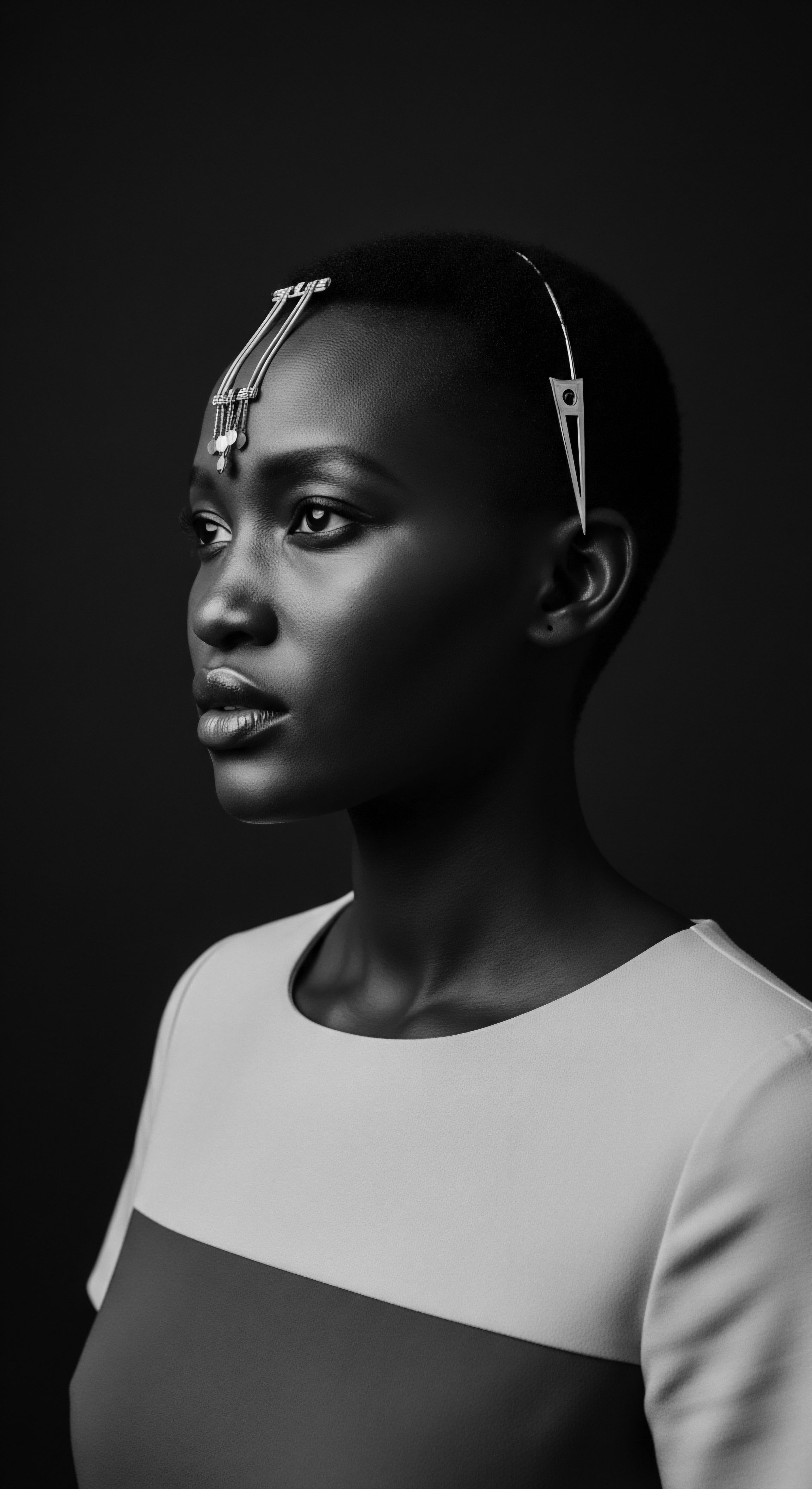
Reflection on the Heritage of Hair Stem Cells
As we draw this meditation to a close, the Hair Stem Cells stand not just as microscopic wonders, but as profound metaphors for the enduring spirit of textured hair. Their very existence within the follicle, a silent promise of renewal, echoes the resilience woven into the heritage of Black and mixed-race communities. Through centuries of adaptation, of resistance, and of vibrant self-expression, the inherent capacity for growth has persisted, much like the tireless work of these foundational cells. The narrative of hair, from the ancient adornments of West African royalty to the defiant Afros of the Civil Rights era, has always been a living archive of identity, a testament to the power of ancestral wisdom.
The Soul of a Strand, then, is not merely a poetic notion; it is the deep, cellular memory of countless generations, a biological continuum that connects us to those who braided stories into their coils and celebrated their crowns as sacred. The scientific understanding of Hair Stem Cells simply provides a language for what our ancestors instinctively knew ❉ that the vitality of our hair springs from a nurtured source, a place of profound connection to self and lineage. This ongoing journey of discovery, blending ancestral practices with contemporary science, allows us to honor the past while shaping a future where every textured strand is recognized for its inherent beauty and its profound historical significance.
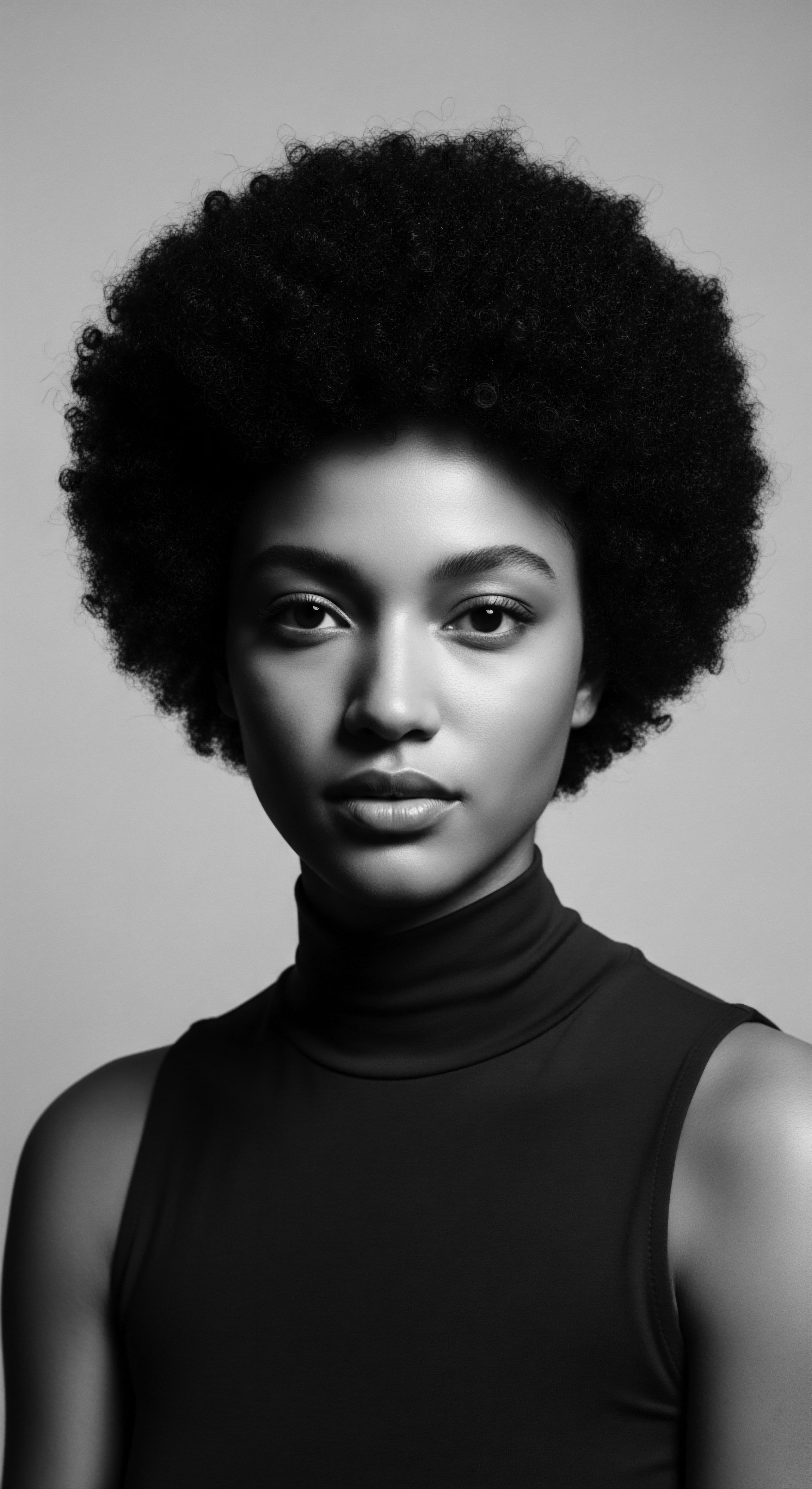
References
- Byrd, A. D. & Tharps, L. L. (2001). Hair Story ❉ Untangling the Roots of Black Hair in America. St. Martin’s Press.
- Byrd, A. D. & Tharps, L. L. (2014). Hair Story ❉ Untangling the Roots of Black Hair in America. St. Martin’s Press.
- Rosado, S. D. (2003). No Nubian Knots or Nappy Locks ❉ Discussing the Politics of Hair Among Women of African Decent in the Diaspora. A Report on Research .
- Aladesuru, B. H. Cheng, D. Harris, D. Mindel, A. & Vlasceanu, M. (2020). To Treat or Not to Treat ❉ The Impact of Hairstyle on Implicit and Explicit Perceptions of African American Women’s Competence. Open Journal of Social Sciences, 8 (10), 303-317.
- Dione, S. (2007). Hair and Identity in the African Diaspora ❉ Race, Gender, and Beauty. Routledge.
- Nyela, O. (2021). Braided Archives ❉ Black hair as a site of diasporic transindividuation. York University.
- Kaboré, A. Ouédraogo, N. Traoré, A. & Guissou, I. P. (2024). Cosmetopoeia of African Plants in Hair Treatment and Care ❉ Topical Nutrition and the Antidiabetic Connection?. Diversity, 16 (2), 96.
- Mouchane, M. Taybi, H. Gouitaa, N. & Assem, N. (2024). Ethnobotanical Survey of Medicinal Plants used in the Treatment and Care of Hair in Karia ba Mohamed (Northern Morocco). Journal of Pharmacy & Pharmacognosy Research, 12 (2), 260-272.
- Ezekiel, A. B. & Olayinka, E. (2024). Cosmetic Ethnobotany Used by Tribal Women in Epe Communities of Lagos State, Nigeria. Juniper Publishers .
